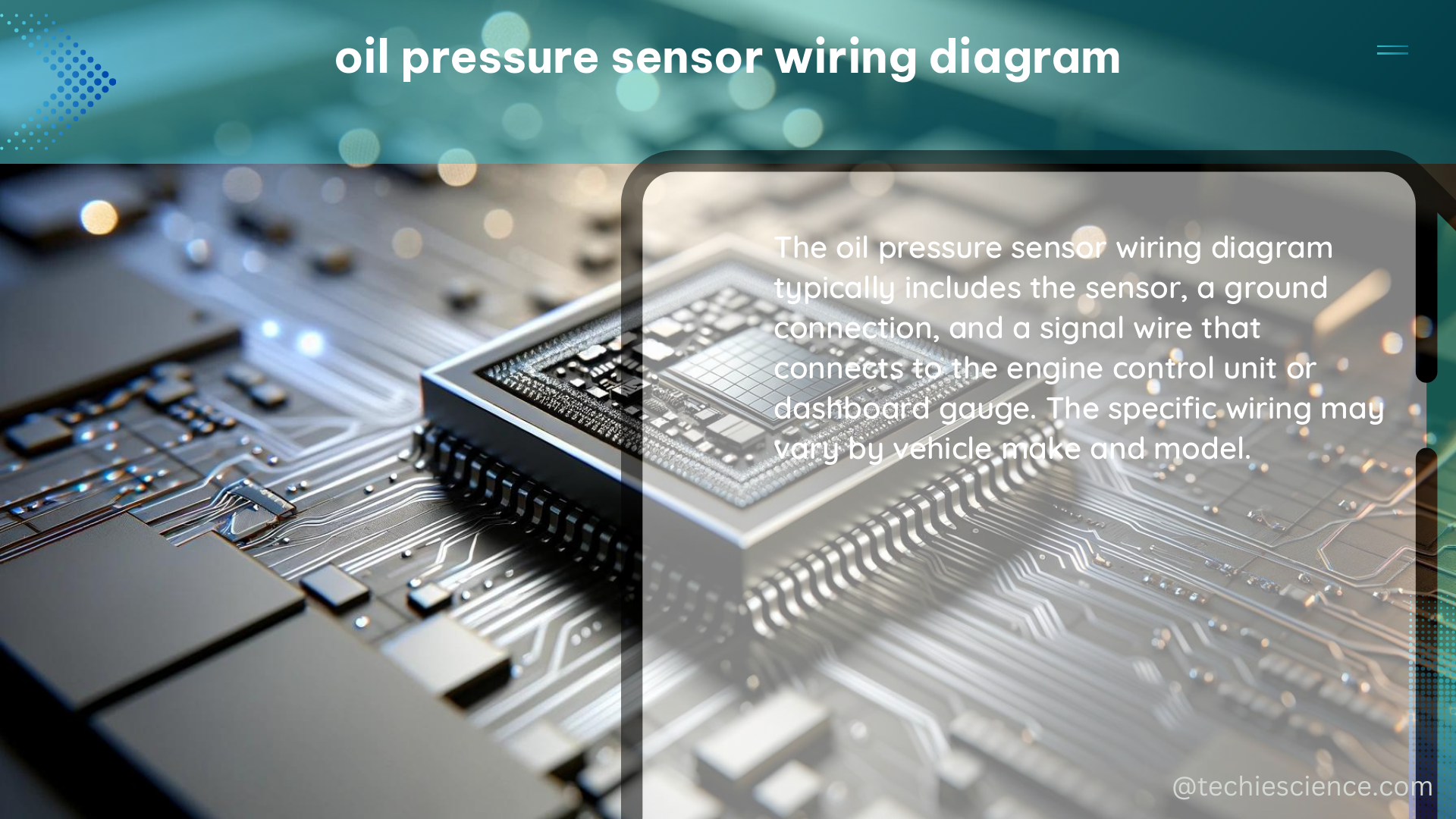The oil pressure sensor wiring diagram is a crucial component in any vehicle’s engine management system, providing essential information about the engine’s oil pressure, which is vital for the engine’s proper functioning and longevity. The wiring diagram for the oil pressure sensor varies depending on the make and model of the vehicle, but some common features and specifications can be found across different models.
Understanding the Oil Pressure Sensor Wiring Diagram
According to the search results, the oil pressure sensor wiring diagram typically involves three wires: one for the sensor ground, one for the sensor signal, and one for the sensor power. For instance, in a 3-wire oil pressure sensor, the wires may be color-coded as black for ground, white for signal, and red for power. In some cases, the sensor may require a 5V power supply, while in others, it may use the ECU’s sensor ground.
Sensor Types and Wiring Configurations
The oil pressure sensor wiring diagram may also vary depending on the type of sensor used. For example, a TI 150 PSI oil pressure sensor has three pins that require 0V (GND), 0.5V to 4.5V Signal, and +5V. In contrast, a single-pin oil pressure sending unit in a 1999 LS1 harness connects directly to the gauge without going into the PCM.
| Sensor Type | Wiring Configuration |
|---|---|
| TI 150 PSI Oil Pressure Sensor | 0V (GND), 0.5V to 4.5V Signal, +5V |
| Single-pin Oil Pressure Sending Unit (1999 LS1) | Connects directly to the gauge without going into the PCM |
Determining the Specific Wiring Diagram
To determine the specific wiring diagram for a particular vehicle, one may refer to the vehicle’s service manual or wiring diagram. For instance, in a VW Passat Family (NMS and B7) TDIs (2012+), the oil pressure sensor wiring diagram can be found in the Bentley service manual, specifically on diagram 32/12 on page 97-309.
Common Wiring Configurations

As mentioned earlier, the oil pressure sensor wiring diagram typically involves three wires: ground, signal, and power. However, the specific color-coding and voltage requirements may vary depending on the type and model of the sensor. Here are some common wiring configurations:
- 3-wire Oil Pressure Sensor:
- Black wire: Ground
- White wire: Signal
-
Red wire: Power (typically 5V)
-
2-wire Oil Pressure Sensor:
- Ground wire
-
Signal wire
-
Single-pin Oil Pressure Sending Unit:
- Connects directly to the gauge without going into the PCM
It’s important to note that the wiring colors and configurations may differ across vehicle makes and models, so it’s crucial to refer to the specific service manual or wiring diagram for the vehicle you’re working on.
Troubleshooting the Oil Pressure Sensor Wiring
If you encounter issues with the oil pressure sensor wiring, here are some steps you can take to troubleshoot the problem:
- Verify the Wiring Diagram: Ensure that you have the correct wiring diagram for your vehicle and that the sensor is wired according to the specifications.
- Check for Continuity: Use a multimeter to check for continuity in the wiring, ensuring that there are no breaks or shorts in the circuit.
- Test the Sensor: Disconnect the sensor and test it with a multimeter to ensure that it’s functioning correctly.
- Check for Proper Grounding: Ensure that the sensor ground wire is properly connected to a good ground point on the vehicle.
- Inspect for Damage: Visually inspect the wiring and connectors for any signs of damage, such as fraying, corrosion, or loose connections.
By following these steps, you can effectively troubleshoot and resolve any issues related to the oil pressure sensor wiring diagram.
Conclusion
The oil pressure sensor wiring diagram is a critical component in the engine management system, providing essential information about the engine’s oil pressure. Understanding the wiring configurations, sensor types, and troubleshooting techniques can help ensure the proper installation and operation of the oil pressure sensor, ultimately contributing to the engine’s overall health and performance.
References:
- 3-Wire Oil Pressure Sensor Wiring Diagram
- TDI Club Forums
- TI 150 PSI Oil Pressure Sensor Wiring
- Turbo Mopar Forums
- LS1 Oil Pressure Sending Unit Pinouts

The lambdageeks.com Core SME Team is a group of experienced subject matter experts from diverse scientific and technical fields including Physics, Chemistry, Technology,Electronics & Electrical Engineering, Automotive, Mechanical Engineering. Our team collaborates to create high-quality, well-researched articles on a wide range of science and technology topics for the lambdageeks.com website.
All Our Senior SME are having more than 7 Years of experience in the respective fields . They are either Working Industry Professionals or assocaited With different Universities. Refer Our Authors Page to get to know About our Core SMEs.